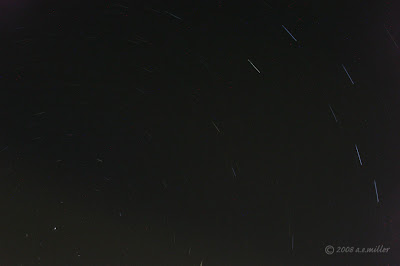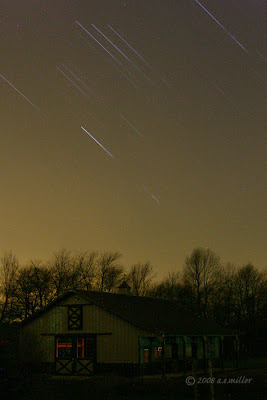The problem I've found is the noise I get (shooting digitally, anyways, I haven't tried film) with increasingly longer exposures, mainly in the form of blue and red dots (some call them "hot pixels"). At first I thought, "Wow! It's even picking up the blue and red stars!" But alas, it isn't that exciting. I've done some research, and some people say that cooler temperatures help alleviate the problem. I'll just have to keep experimenting.
Regardless, I love doing this. For one, it's great to be able to run outside on a commercial break of Dancing with the Stars, set up the camera, trip the shutter with my cable release, run back inside, watch the show for 20 minutes or so, run back outside, close the shutter and voila! It wows me every time.
This first photo is of the north sky. The six brightest star trails in the right third of the frame are those of the Big Dipper. I love that this shows the rotation with Polaris at its center. This is approximately a 20-25 minute exposure at f/11, ISO 200.
 This second photo is of the west-southwest sky. The brightest stars make up Orion -- see the three main stars of his belt? This exposure used the same settings but lasted about 40 minutes.
This second photo is of the west-southwest sky. The brightest stars make up Orion -- see the three main stars of his belt? This exposure used the same settings but lasted about 40 minutes.
Camera: Canon Rebel DSLR.

No comments:
Post a Comment